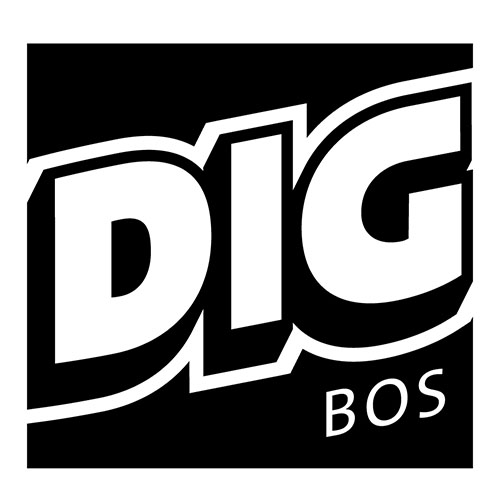
Elsa Dorfman is an American photographer, based in Cambridge, who is perhaps best known for her work done with “instant” Polaroid cameras, particularly in the atypically large 20×24 format.
Errol Morris is an American filmmaker known for works including The Thin Blue Line [1988], Fast, Cheap, & Out of Control [1997], and The Unknown Known [2013]. His latest film, The B-Side: The Portrait Photography of Elsa Dorfman [2017], is centered around interviews with Dorfman, which are conducted in her working spaces. We interviewed the pair together in late May from the comfort of Dorfman’s own driveway.
Tell me about how you found the compositions for the central interview of the film, how you fit cameras in that room, and how you felt around them.
Elsa Dorfman: Crowded.
Errol Morris: It was crowded.
ED: He could hop up on that counter [pointing], right there, so gracefully. He was so happy! One thing I did learn is that he’s happy climbing up things. I can’t do it. And in my darkroom, there’s another counter, about that high. And he got up there—he’s actually very flexible…
EM: Not that flexible.
ED: …and he never looked happier than he did with that Revolution camera.
EM: I like the Revolution.
Why’s that?
EM: I filmed interviews for the Netflix series [Wormwood, upcoming] … where I used multiple cameras. I had as many as eight, nine, or 10 cameras on interviews, without using the Interrotron [his trademark dual-camera setup, which he has used to film interviews throughout the past 20 years]. And it worked really, really well. It was just something very new and very different. So I decided to shoot Elsa with multiple cameras. We had two high-angle cameras. And there was the Revolution, which is essentially a lens system put onto a camera, which gives you enormous flexibility in framing. The Revolution has all of these periscopes and knuckle joints, so you can put the lens in very odd places, and you can turn or dutch the image in many, many, many ways. Which allowed me to talk to Elsa and operate the camera at the same time. Which is kind of amazing. I don’t think I’ve ever done that before: talking and framing.
ED: And you were running the camera as if you belonged to the union. That set the tone—not exactly recklessness, but—what’s going on here? Is he gonna make it without hurting himself?
A physically arduous shoot?
EM: We were all crammed in back there. We had four, possibly five cameras at times in there.
ED: And the darkroom, also, [which] is half the size.
EM: We had three cameras in the darkroom at most.
So would you say that the angles you chose were based on the practicality of the space, or were you able to have some freedom in your choices within those rooms?
EM: Well, you have five cameras, so you have choices. There were two high angles, which I love.
To be more specific then, why do you love the high angles, why was that essential?
EM: Nothing is essential. I liked it. What other criteria could there be? You want to create images that aren’t traditional, or that you haven’t seen endlessly before. We just were talking about it in the last interview, but it does interest me that the frame of Elsa’s photographs—20×24—is perfectly incompatible with motion picture photography. Particularly if you’re framing everything in a ’scope ratio, 2.4:1, roughly two-and-a-half times the width to the height. If she had shot them on their side, it would have been easier. But still difficult.
One thing I was going to ask was whether or not you felt Elsa’s sense of composition had influenced your own in making the movie, but given the ratios I guess that’s pretty much impossible.
EM: I think yes, but in a different way than framing. I don’t know if it’s “influenced me” so much as I endlessly think about how we’re similar artists. That I do believe. Elsa likes the idea of people presenting themselves to her camera. And I used to say—I think maybe even before I met [Elsa]—that if you’re doing your job correctly, you’ve recorded a relationship. You’ve recorded the relationship of your subject to yourself, and [to] the camera. Elsa very much does that. Those pictures are all relationship pictures. They could not have been done without Elsa.
ED: I agree. I’m sitting here glowing. I feel like I’m at a bat mitzvah. Remembering it all!
EM: We’re sort of connected in so many ways. But I learned a lot making this movie. I really did, I’m not just saying it. It gives me a lot to think about. It surprises me, actually.
ED: The thing that was actually true … you could go back and even say it about Allen [Ginsberg] … the playfulness. There was a huge amount of playfulness in the making of the movie. It didn’t necessarily come out frame after frame. But our teamwork, let’s say, or our just hanging out, was an important part of how it evolved. It wasn’t cerebral, wouldn’t you say? It wasn’t consciously cerebral. I love cerebral movies, but this wasn’t one of them. And I think my photography—I might see triplets and think, they should be lined up—but that’s about the extent of my engineering. I would say I’m very much about two things: I don’t want anybody sad around me, and I don’t want it too planned. I want to be open to what happens.
Did you two intend for the film to be about Cambridge, in addition to being about Elsa’s photography? There are moments that detail old local bookshops, and a sequence about the Phoenix—for me it became a portrait of this place at a certain moment in time.
ED: I didn’t think of it at all, but that doesn’t mean it isn’t there.
EM: It becomes a portrait of Cambridge, in part, because it’s shot in Cambridge, and because a lot of the things Elsa did are in Cambridge. But I think it has a much broader scope to it. One of the things I like about the movie is that it seems to have the broadest scope imaginable. It’s about time, memory, the impermanence of things, death. I think it’s themes that go well beyond Cambridge, MA.
Well, [Cambridge] would just be the surface, for me. But I’m interested in surfaces.
EM: It was never intended to be a portrait of Cambridge. Although…
ED: How could it not be?
EM: How could it not be? Exactly.
Conversation has been edited and condensed.
THE B-SIDE: ELSA DORFMAN’S PORTRAIT PHOTOGRAPHY. RATED R. OPENING FRI 7.14 AT KENDALL SQUARE CINEMA.

